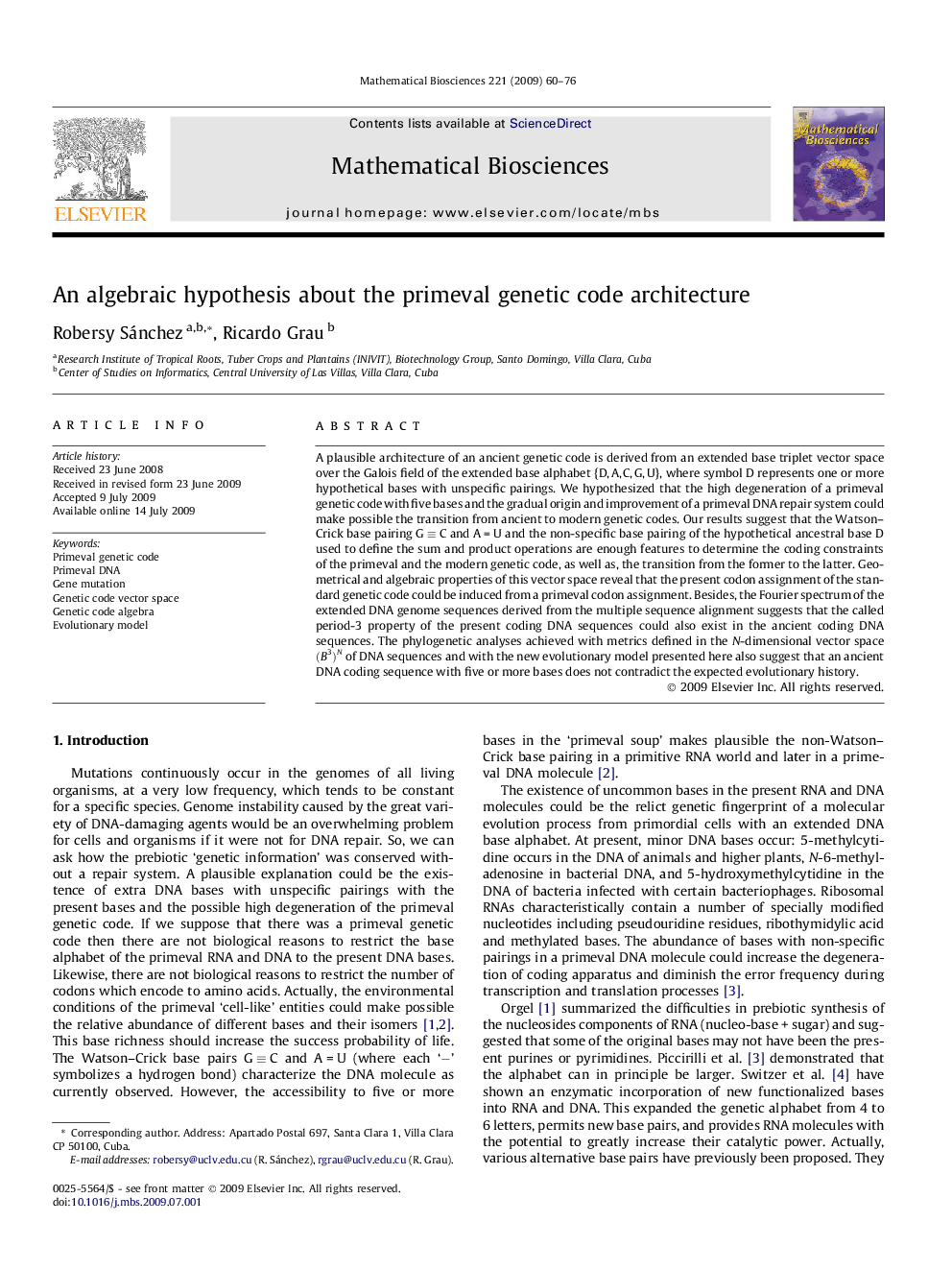| Article ID | Journal | Published Year | Pages | File Type |
|---|---|---|---|---|
| 4500560 | Mathematical Biosciences | 2009 | 17 Pages |
A plausible architecture of an ancient genetic code is derived from an extended base triplet vector space over the Galois field of the extended base alphabet {D, A, C, G, U}, where symbol D represents one or more hypothetical bases with unspecific pairings. We hypothesized that the high degeneration of a primeval genetic code with five bases and the gradual origin and improvement of a primeval DNA repair system could make possible the transition from ancient to modern genetic codes. Our results suggest that the Watson–Crick base pairing G ≡ C and A = U and the non-specific base pairing of the hypothetical ancestral base D used to define the sum and product operations are enough features to determine the coding constraints of the primeval and the modern genetic code, as well as, the transition from the former to the latter. Geometrical and algebraic properties of this vector space reveal that the present codon assignment of the standard genetic code could be induced from a primeval codon assignment. Besides, the Fourier spectrum of the extended DNA genome sequences derived from the multiple sequence alignment suggests that the called period-3 property of the present coding DNA sequences could also exist in the ancient coding DNA sequences. The phylogenetic analyses achieved with metrics defined in the N -dimensional vector space (B3)N(B3)N of DNA sequences and with the new evolutionary model presented here also suggest that an ancient DNA coding sequence with five or more bases does not contradict the expected evolutionary history.
